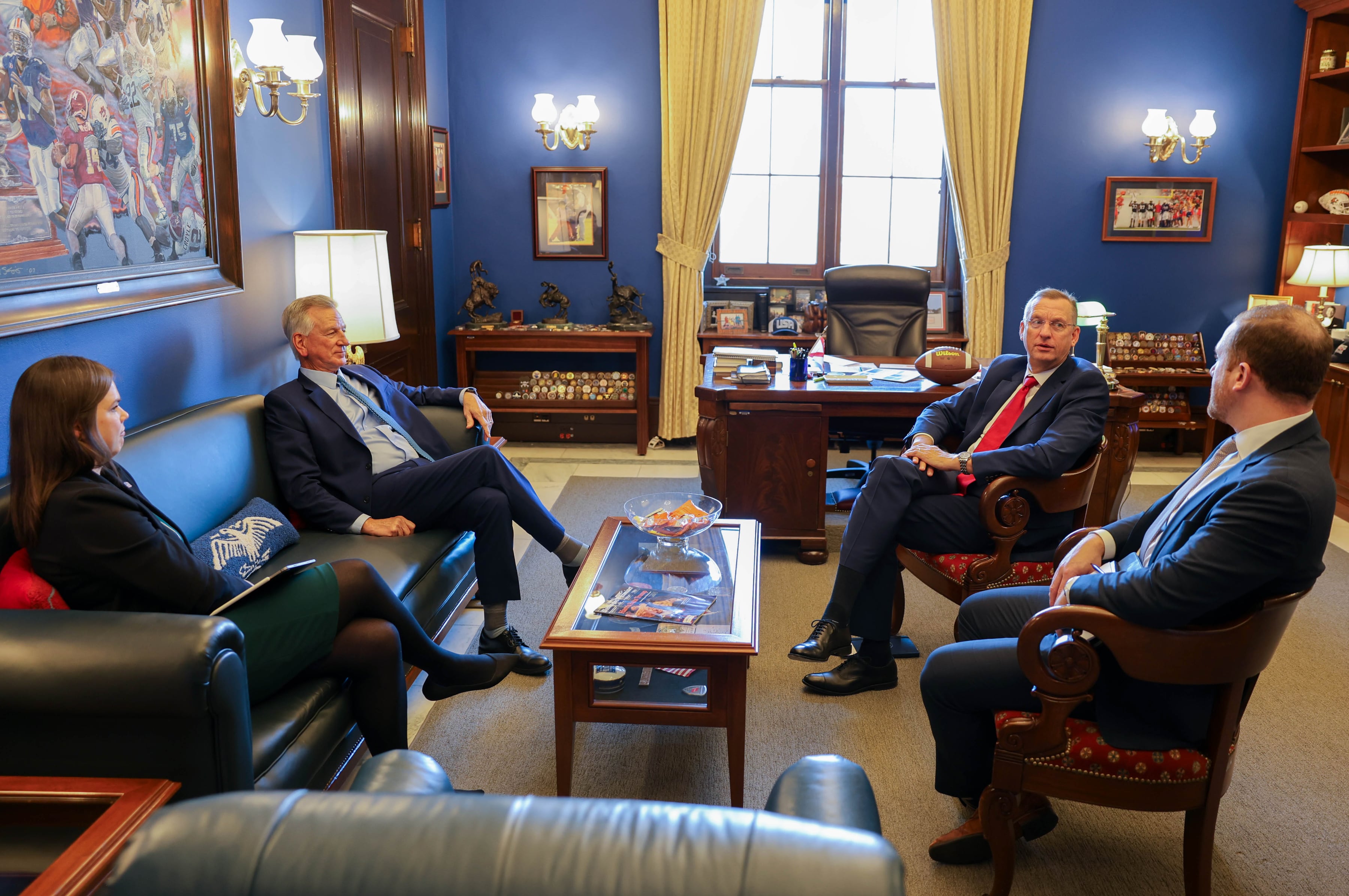SIMI VALLEY, Calif. — Delays to the F-35 fighter’s Technology Refresh 3 upgrades will have a cascading effect that will hinder a major follow-on modification to the jet, a leading House lawmaker said Saturday.
Rep. Rob Wittman, R-Va., chairman of the House Armed Services Committee’s tactical air and land forces panel, told Defense News at the Reagan National Defense Forum in Simi Valley, California, he is “very disappointed” by the repeated delays in the TR-3 upgrades.
And he warned the delayed TR-3 rollout will create further scheduling issues in the more expansive upgrade known as Block 4, he added.
TR-3 is expected to give the F-35 better displays, computer memory and processing power. But software and integration problems have kept TR-3 from working, and the government has refused to accept the newest F-35s rolling rolled off the production lines of manufacturer Lockheed Martin in Fort Worth, Texas.
TR-3 was once expected to conclude in April 2023, but that deadline has twice slipped. The Pentagon and Lockheed now say it could come between April and June 2024.
Wittman said that deadline — more than a year late — is “very problematic, especially since we have a platform that we spent a significant amount of time and money on, and one that we know isn’t up to its full capability because of software inadequacies.”
Wittman said he’s not confident the Pentagon and Lockheed will be able to deliver on the latest mid-2024 deadline for TR-3.
“I want to be positive, but call me skeptical,” he said.

The TR-3 technology is necessary for parts of the Block 4 upgrade, which will include the ability to carry more long-range precision weapons, new sensors, more powerful data fusion, increased interoperability with other platforms and advanced electronic warfare capabilities.
The F-35 Joint Program Office told Defense News on Wednesday that it will respond to Wittman’s concerns directly.
The office noted that not all Block 4 capabilities require TR-3 to function on the F-35, such as the already-delivered Automatic Ground Collision Avoidance System, or Auto GCAS; an interim full-motion video capability; and some communications technology improvements.
“As hardware increases and is updated, fusion improvements are integrated and other processing-heavy software is added,” the JPO said. “TR-3 will be needed to power the more advanced capabilities in development.”
The office also said it started delivering the first Block 4 capabilities in 2019, years ahead of schedule. Those capabilities included Auto GCAS, the Navy’s Joint Standoff Weapon variant known as C-1, and the ability to attack moving targets on the ground with the laser-guided GBU-12 Paveway II and GBU-49 bombs.
A technical baseline review on the F-35′s Block 4 development is also underway, as Bill LaPlante, the undersecretary of defense for acquisition and sustainment, ordered it earlier this year, the office noted.
Technical experts from the Navy and Air Force have spent the last few months evaluating Block 4′s development schedule, hardware maturity, program risks, software tools, and the skill sets government and industry workers need to work on the upgrades.
Lockheed Martin concurred with the Joint Program Office’s response to Defense News and declined to comment further.
Wittman said the F-35 program needs six more test beds of aircraft to focus entirely on rapidly trying out the TR-3 software improvements. The current limited testing infrastructure has led to slow progress on ironing out the problems with TR-3, he said, particularly when the software shuts down.
“What’s happening right now is, even the structure of how you do testing and development with the software has resulted in its failures,” Wittman said. “If you have six test beds, you can fly the aircraft and do things simultaneously, so your learning curve gets a lot faster.”
Wittman said the TR-3 woes show the Pentagon needs to change its mindset to put an earlier focus on software in program development.
“For years, the Pentagon has been a hardware-centric organization,” Wittman said. “In today’s world … software needs to be at the forefront, then hardware needs to follow that.”
That will be even more important as the Air Force moves forward with its collaborative combat aircraft concept, which seeks to team autonomous drone wingmen with F-35s, Wittman said.
He wants to see the Air Force and the Joint Program Office set up an effort to more closely track the software process and upgrades day by day.
“We do a great job in manufacturing the hardware elements of what the aircraft can do,” Wittman said. “But all the things that we design the hardware around are only enabled if you have the software. We kind of have gotten things backwards.”
Stephen Losey is the air warfare reporter for Defense News. He previously covered leadership and personnel issues at Air Force Times, and the Pentagon, special operations and air warfare at Military.com. He has traveled to the Middle East to cover U.S. Air Force operations.
Noah Robertson is the Pentagon reporter at Defense News. He previously covered national security for the Christian Science Monitor. He holds a bachelor’s degree in English and government from the College of William & Mary in his hometown of Williamsburg, Virginia.





